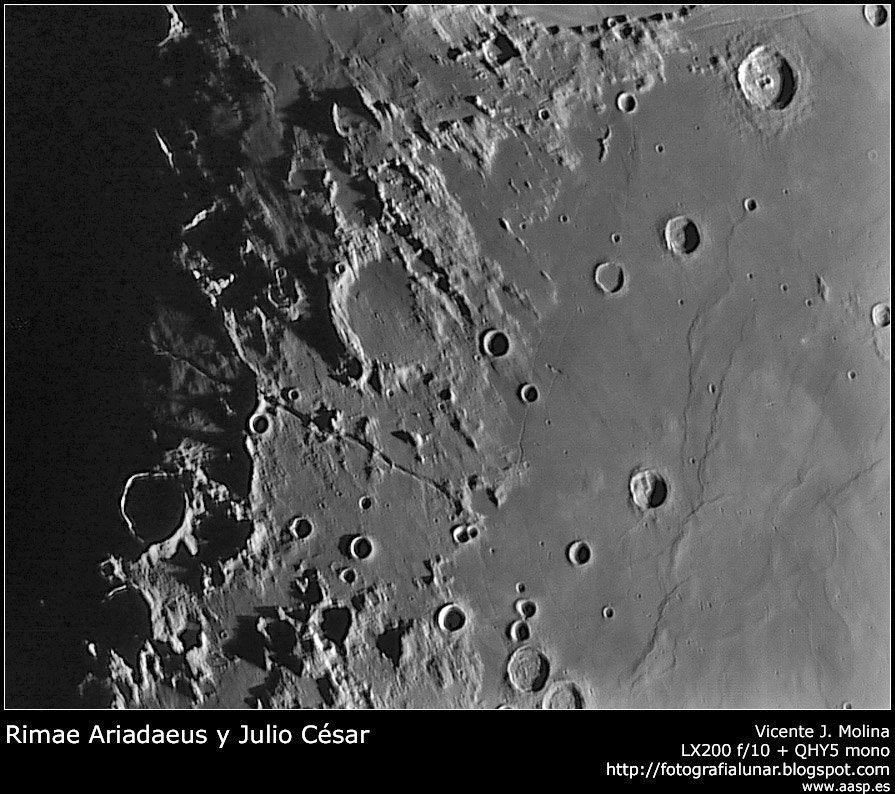December 8, 2009
Edgy
image by Vicente J. Molina,Santa Pola, Spain
The boundary between two geologic units provides evidence about both. Here we are at the western edge of Mare Tranquillitatis, with mare lavas to the right and more rugged terrain to the left. Which is older? The craters along the boundary tell the story; many have missing walls on the mare side and are embayed with lava. The mare is younger. The smooth plain cut by the Ariadaeus Rille is widely interpreted to be ejecta from the formation of the Imrium Basin, as is the more rugged material that covers some of the older craters and is visible as dark lumpiness near the terminator. So the mare lavas are younger than the formation of Imbrium Basin, not a surprise, but we have stratigraphic evidence here. The rille is younger than the Imbrium ejecta (because it cuts it), but is older than the mare lavas for it is truncated just at the boundary. I am surprised that we don't see any hints of the rille under the mare - would we if the terminator were near that boundary? At the top of the image is another rille, the Chuck Wood
Technical Details
11/23/09. LX200 10" + QHY5 mono camera
Image from LPOD Photogallery
Related Links
Rükl plate 35
Vincente's Fotografía Lunar
COMMENTS?
Click on this icon File:PostIcon.jpg at the upper right to post a comment.




